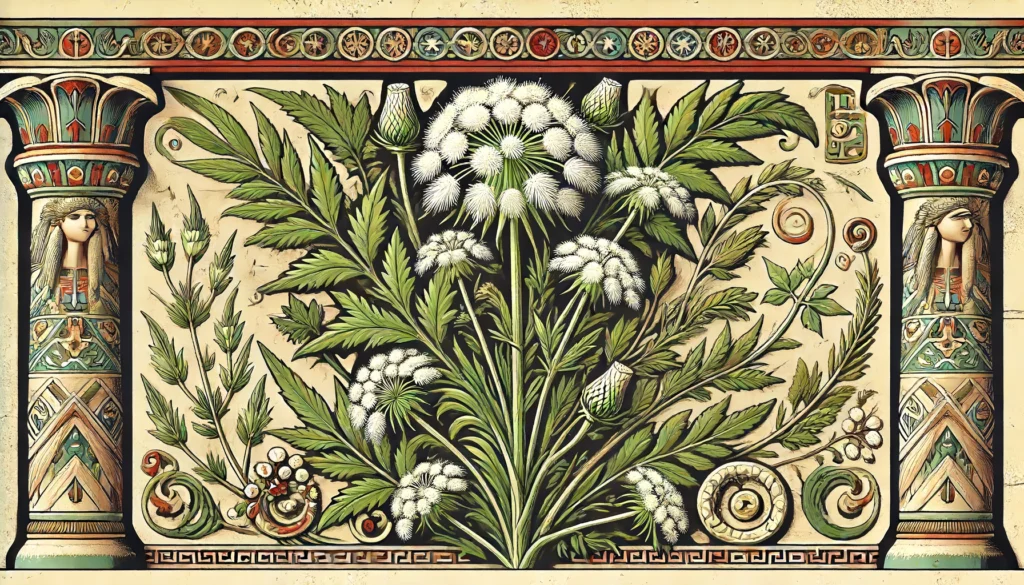

Home » Cat Plants » Is Your Cat at Risk from the False Queen Anne’s Plant?

False Queen Anne’s Lace, also known as bishop’s weed, greater ammi, or Ammi majus, is a flowering plant that can be toxic to cats if ingested.
This ornamental plant, commonly found in gardens and floral arrangements, contains furanocoumarins which can cause photosensitization in cats, leading to severe skin irritation and potential blindness.
Ingestion may cause mild gastrointestinal upset, but is generally not life-threatening.
Ingestion can result in mild symptoms like vomiting, diarrhea, or drooling. Rarely fatal but may require veterinary care.
Eating these plants can lead to more pronounced symptoms like abdominal pain, lethargy, or difficulty breathing. Veterinary intervention may be necessary.
Ingesting even small amounts can cause severe symptoms like organ damage, seizures, or cardiac failure without rapid treatment.
All parts of these plants are extremely poisonous to cats and can quickly lead to death, even with immediate veterinary care.
** Please note: Please note that toxicity level can vary based on the amount ingested and the specific cat. It's always best to keep these plants completely inaccessible to cats and seek immediate veterinary care or call the poison hotline if you suspect your cat has ingested any part of a toxic plant.
If a cat ingests False Queen Anne’s Lace, they may experience photosensitization, which is an extreme sensitivity to sunlight on exposed skin. The toxic components of the plant, primarily furanocoumarins, cause the skin to become hypersensitive to UV light. Affected areas may blister, wrinkle, split open, or slough away when exposed to sunlight. Additionally, the plant can cause conjunctivokeratitis and clouding of the corneas, potentially leading to permanent scarring and blindness.
If you suspect your cat has ingested False Queen Anne’s Lace, it is crucial to seek veterinary care immediately. Your veterinarian will likely perform the following diagnostic tests to confirm the toxicity and rule out other underlying conditions:

A: Yes, cats can be allergic to False Queen Anne’s Lace. Symptoms of an allergic reaction may include itching, sneezing, and skin irritation.
A: Yes, False Queen Anne’s Lace, also known as Bishop’s Weed or Ammi majus, is toxic to cats. Ingesting any part of this plant can cause symptoms such as vomiting, diarrhea, and drooling.
A: Symptoms of False Queen Anne’s Lace poisoning in cats include vomiting, diarrhea, excessive drooling, and abdominal pain. Immediate veterinary care is recommended if ingestion is suspected.
A: To prevent contact, ensure that False Queen Anne’s Lace is not present in your home or garden. Keep your cat indoors or monitor outdoor activities closely to avoid exposure.
A: If your cat ingests False Queen Anne’s Lace, contact your veterinarian immediately. Do not induce vomiting unless instructed by a veterinary professional. Immediate medical attention is necessary.
A: False Queen Anne’s Lace is more commonly found in wild areas and along roadsides rather than home gardens. However, if you do have this plant in your vicinity, it is important to ensure it is kept out of reach of cats to prevent accidental ingestion.
False Queen Anne’s Lace is a member of the Apiaceae family and is native to the Mediterranean region. It was introduced to other parts of the world, including the United States, as an ornamental plant. The plant is known for its tall stems, reaching 1-2 feet in height, and its distinctive lace-like flower clusters that are white in color.
Despite its beauty, the plant has spread and naturalized in many areas, making it important for cat owners to be aware of its potential toxicity.
Please note: The information shared in this post is for informational purposes only and should not be considered as veterinary medical advice.
🐾 A hilarious or heart-melting cat video
🐾 Our latest paws-on review of a cool cat toy